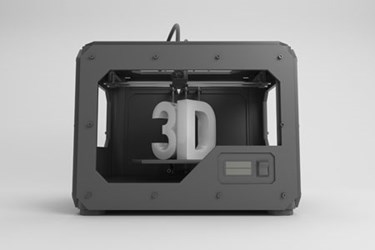Manufacturing Demand For 3D Printing On The Rise
By Trisha Leon, contributing writer

3D printing can be a very lucrative market for VARs. Average sales prices are much higher than typical IT products, and VARs who invest in dedicated and trained sales teams and technical infrastructure can see high margins. The market for 3D printing in the manufacturing vertical has grown considerably in the past five years. R&D Magazine, says the market is driven by technological developments, falling costs, and new applications. The article also points out the rate of market growth is greater than expected — IBISWorld reports the market at $1 billion in the U.S. in 2014, with a CAGR of 22.8 percent over the 2009 to 2014 time period.
R&D Magazine conducted a survey that showed 47 percent of respondents use 3D printing as their “additive manufacturing technique of choice,” followed by stereolithography (19 percent), fused deposition modeling (17 percent), and direct metal laser sintering (15 percent). Of those surveyed, 18 percent already own a 3-D printer, and 39 percent are looking to purchase one.
The fraction of manufacturers preferring 3D printing isn’t surprising. The technology has some distinct advantages over traditional means of manufacturing. In an interview with Fortune magazine, Carine Carmy, marketing director of Shapeways, a 3D printing marketplace, says that “there is no cost to complexity” with 3D printing. These solutions can manufacture intricate or complex objects in one piece rather than manufacturing separate pieces which would require assembly later. This opens the door to creating one-off or limited-edition pieces in an easier, more affordable manner. The article points out General Motors and Ford both use the technology to speed up the design and prototyping process.
Along with the benefits to your manufacturing customers, you can find 3D printing also has benefits for you. In Business Solutions’ article If You Don't Sell 3D Printers Now, You'll Hate Yourself Later, TJ Trojan, senior vice president of product management for SYNNEX Corporation, says beyond the initial sale of hardware and materials, VARs can find recurring revenue opportunities replenishing consumables, providing services, managing third-party production or tooling, and development. Trojan says, “VARs who incorporate value-adds beyond hardware and material sales will stay ahead in 3D printing. Once 3D printers are well established on a VARs line card, they will see the benefits of offering a leading edge, next-generation technology with plentiful vertical market applications.”
